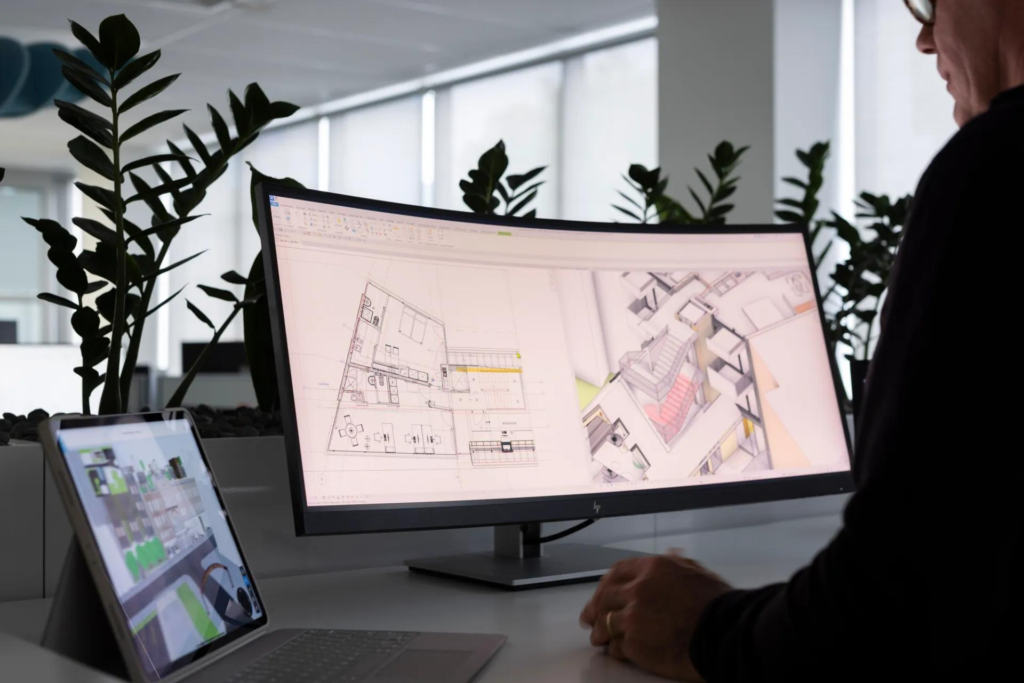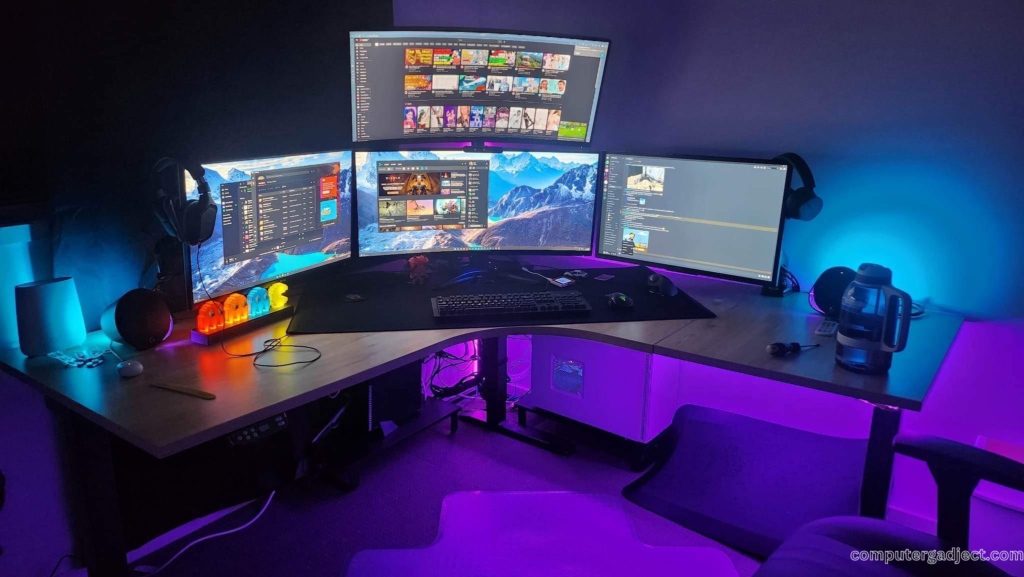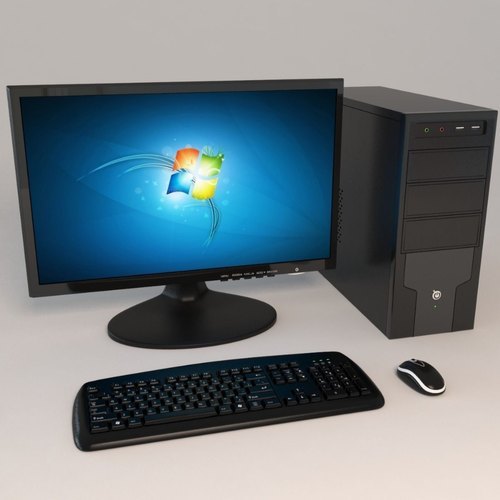Revit requires a multi-core processor, 8 GB RAM, and a DirectX 11 capable graphics card. A solid-state drive (SSD) enhances performance.
Selecting the right computer for Revit ensures smooth and efficient operation. Revit from Autodesk is powerful, resource-intensive building information modeling (BIM) software widely used by architects, engineers, and construction professionals. The demands of 3D modeling, rendering, and managing large data sets require a robust system.
Prioritizing key components include a high-speed processor, sufficient memory, and advanced graphics capabilities. An SSD is recommended for faster file access and overall system responsiveness. Ideally, the system should have room for updates to adapt as the project’s complexity increases. Ensuring your computer meets these specifications will give you a better experience with Revit and give you an advantage in handling complex simulations and designs.
Why Revit Specifications Matter
Selecting the proper computer specifications for Revit is crucial. This powerful software requires a system that can keep up with its demanding nature. Users need smooth and efficient performance to handle complex architectural designs. Ensuring your the Revit requirements is non-negotiable for professional results.
Impact On Project Efficiency
Optimal Revit specifications directly increase project productivity. Adequate hardware resources enable faster model rendering and smoother transitions between views. High-performance systems support multitasking without lag, leading to better workflow and time management. Below are the key components that influence the efficiency of Revit:
1. CPU: A fast processor executes tasks quickly.
2.RAM: Ample memory prevents slow performance.
3. Storage: SSDs offer quick access to files and programs.
4. Graphics: A powerful GPU generates detailed models faster.
Avoiding System Lag And Crashes
Adhering to the recommended specifications is essential to avoid slowdowns and failures. Insufficient system resources can cause delays, frustration, and possible data loss. Invest in a stable and reliable infrastructure to protect against these risks. Consider these critical system recommendations:

Component
Minimum Recommended
Optimal Performance
CPU
Intel i5 or equivalent
Intel i7 or higher
Memory (RAM)
8 GB
16 GB or more
Graphics Card
DirectX 11 capable
DirectX 12 with more VRAM
Storage (SSD)
256 GB
512 GB or more
By prioritizing these elements, you can ensure that Revit runs reliably and without interruptions.
Core System Requirements
Basic system requirements using the proper settings for Revit is essential. Revit performance depends on the power of your computer. Good system specifications mean smooth and efficient work. This section details the basic system requirements to run Revit effectively.
Minimum Vs. Recommended Specs
Different specifications meet different needs. Minimum specifications handle essential functions, while recommended specifications offer more speed and power. Choose specifications based on the size and complexity of your project.
Minimum specifications:
Component
Requirement
Processor
2.5-2.9 GHz or higher
Memory
8 GB RAM
Video Display
1920 x 1080 with True Color
Graphics Card
DirectX 11 capable
Recommended Specifications:
1. Processor: Multi-Core Intel i5, i7 or AMD equivalent
2. Memory: 16 GB RAM or more
3.Video display: 3840 x 2160 (4K)
4. Graphics card: DirectX compatible with Shader Model 5
Understanding Revit Compatibility
Compatibility ensures that Revit runs smoothly. Check the software version to match your system specifications. Use the Autodesk website to adapt it to your setup.
1. Operating system: Windows 10 64-bit
2.NET Framework: .NET Framework version 4.8 or later
3. Revit Software Version – Check with Autodesk
Stay up to date with system drivers and software patches. Regular updates improve performance and compatibility.
Processor Performance
When designing in Revit, the performance of your computer’s processor is critical. Determines how efficiently the software works. An underpowered CPU can cause frustrating lags and hamper productivity. Choosing the suitable processor can significantly improve your Revit experience.

Importance Of Cpu In Revit
The CPU acts as the brain of the Revit setup. A fast processor easily supports complex tasks and large models, enabling faster rendering and smooth multitasking. Ensuring you have a powerful CPU means better performance and less waiting time.
1. Faster model manipulation
2. Efficient multithreaded tasks
3. Improved rendering capabilities
Comparing Processor Models
Different processors offer different performance. Consider cores, threads, and frequency for Revit tasks.
Processor Model
Cores/Threads
Base Frequency
Boost Frequency
Intel i7
8/16
3.6 GHz
4.9 GHz
AMD Ryzen 7
8/16
3.4 GHz
4.4 GHz
Intel i9
10/20
3.7 GHz
5.3 GHz
Analyze benchmarks and real-world tests to find the best fit for your Revit projects. Look for a processor that delivers optimal performance without breaking your budget.
Memory Necessities
Autodesk Revit is a powerhouse for 3D modeling and architectural design. It requires adequate memory to function optimally. To avoid performance issues, let’s dive into the details of RAM for Revit users.
RAM capacity for Revit
Ram Capacity For Revit
Revit RAM capacity is a critical performance factor. Users should aim for a minimum of 16 GB. This meets basic needs. For complex models and detailed elements, 32 GB or more is ideal. Professional work usually requires at least 64 GB. This ensures smooth multitasking and processing. Below is a simple guide:
1. Basic level projects: 16 GB minimum
2. Intermediate to advanced designs: 32 GB
3. Large-scale constructions: 64 GB+
Speed vs. Capacity
Speed Vs. Capacity
In Revit, RAM speed also matters. Higher speeds mean faster data transfer speeds, which improves overall performance. However, increasing capacity takes priority over speed. A balance is vital. Users must strive to find a sweet spot. Aim for high-capacity RAM with reasonable speeds. This ensures that Revit runs smoothly.
Capacity
Recommended Speed
16GB
2400MHz+
32GB
2600MHz+
64GB+
2800MHz+
Select RAM wisely for a smooth Revit experience.
Graphics Card Considerations
Choosing the right graphics card is essential to running Revit smoothly. A sound graphics card ensures that models render quickly and efficiently. In our Graphics Card Considerations section, we’ll explore the differences between dedicated and integrated GPUs and share tips for configuring your graphics for optimal Revit performance.

Dedicated Vs. Integrated Gpus
Dedicated GPUs are separate from the CPU and have their own VRAM (Video RAM). Integrated GPUs share RAM with the computer’s CPU, which could slow down graphics-intensive tasks.
1. Dedicated GPUs provide better performance for 3D modeling.
2. Integrated GPUs may be sufficient for basic 2D tasks but not complex scenes.
3. Revit users should opt for a dedicated graphics card with at least 4 GB of VRAM.
Graphic Settings For Optimal Performance
Setting the graphics options correctly can improve Revit performance. It is optional to maximize all settings.
Setting
Recommendation
Texture Quality
Medium
Anti-aliasing
Turn on if the model seems jagged
Shadows
Off for working, on for presentations
Visual Styles
Use simple styles for editing
Remember, the key is balance. Don’t sacrifice performance for visual things.
Storage Solutions
Choosing the proper storage solution is essential for a seamless Revit experience. The right drive will not only house your projects but also optimize the software’s overall performance.
HDD vs SSD
Hdd Versus Ssd
When focusing on storage types, we consider HDD (hard disk drive) and SSD (solid state drive).
1. Hard drives are traditional storage devices with moving parts.
2.SSDs use flash memory and have no moving parts.
SSDs significantly outperform HDDs in speed and reliability, offering faster boot times and data acc
Storage Size And Speed
Storage size refers to the amount of data the drive can hold. Speed indicates how fast you can read and write data.
Type
Storage Size
Speed
HDD
Larger (up to 10TB+)
Slower (15-160MB/s)
SSD
More limited (up to 4TB)
Faster (200-550MB/s)
An SSD with high storage capacity and speed is ideal for performing demanding Revit tasks.
Operating Systems And Revit
Welcome to the fundamental element that Revit supports: operating systems. Before diving into the world of 3D modeling, it is essential to understand which operating systems are your preferred platforms for running Autodesk Revit. Let’s explore the fundamentals that will ensure your software runs smoothly and efficiently.
Compatible Operating Systems
A compatible operating system is critical to running Revit. Your computer must meet these basics:
1. Windows 10 64-bit – This is the standard for modern machines.
2. Windows 8.1: still compatible but less optimal than Windows 10.
It is essential to note that macOS does not natively support Revit. You will need to use Boot Camp or a virtual machine with a Windows-supported version.
32-bit Vs. 64-bit Systems
The type of system you used influenced Revit’s performance. Here are the main differences:
System Type
Memory Access
Revit Performance
32-bit
Up to 4 GB
Limited capabilities
64-bit
More than 4 GB
Enhanced functionality
For a seamless experience, choose a 64-bit system. It allows Revit to use more RAM, resulting in faster processing and the ability to handle complex projects.
Peripheral And Display Setups
A reliable setup works wonders when tackling complex designs in Revit. Your computer peripherals play a key role. They can speed up or slow down your workflow. You want fast, precise, and convenient tools. From monitors to mice, each piece must work well together.
Multi-monitor Support
Revit thrives in screen space. More monitors mean more space to manage projects. A multi-monitor setup allows you to view models, toolbars, and sheets simultaneously, significantly increasing productivity. Make sure your graphics card can handle multiple outputs for a seamless experience.
1. Check the graphics card for multiple ports
2. Use DisplayPort or HDMI for the best quality
3. Configure settings in Revit for extended screens
Recommended Resolutions
The correct resolution is crucial. High resolution means sharper images and more precise details. For Revit, 1920×1080 (Full HD) is the base—however, 2560×1440 (QHD) or higher offers even greater clarity. Opt for higher resolutions if your budget allows.
Consider these points for resolution:
1. Larger screens benefit from higher resolutions.
2. High resolution may require more powerful graphics cards.
3. Better resolution helps detect minute details.
Screen Size
Recommended Resolution
24 inches
Full HD 1920×1080
27 inches or larger
QHD 2560×1440 or higher
Networking And Collaboration Tools
Working with Revit is more than just computer software. It’s also about how you connect and work with others. Teams use the Internet to share files and data every day. To achieve good teamwork in Revit, computers must communicate quickly and easily.
Internet Speed Requirements
Internet speed is crucial when using Revit with a computer. Fast Internet allows you to download and upload Revit files quickly. This is what you need:
1. Minimum download of 5 Mbps to obtain files quickly.
2. Minimum upload of 2 Mbps to share your work.
3. For large teams, opt for higher speeds.
Check your internet speed online. Make sure it’s fast for smooth teamwork in Revit.
Bim Collaboration In Revit
BIM means making a model of a building on a computer. In Revit, teams work together on this. Good tools help teams work better.
Tool
Use
Revit Server
For teams in one place
BIM 360
For teams in different places
Collaboration for Revit (C4R)
Helps teams work on the cloud
These tools help teams work on the same Revit model, even in a different location.
Remember: tools need good Internet. Always check your settings before working on a project.
Regular Maintenance And Updates
An efficient Revit setup requires regular attention.
Maintenance and updates keep performance running smoothly.
Let’s explore the key maintenance tasks.
Keeping Drivers Up-to-date
Outdated drivers slow down Revit.
Updated drivers increase performance.
Graphics and audio drivers are the most important.
Check manufacturers’ websites for updates.
1. Navigate to the official support page for your device.
2. Locate the driver’s section.
3. Download the latest drivers.
4. Install them by following the on-screen instructions.
Consider using driver management tools.
Scheduling System Maintenance
Systems need regular checks.
Schedule maintenance to ensure stability.
Use tools built into the system for cleaning.
1. Disk cleanup tools free up space.
2. Defragmentation optimizes brutal drive efficiency.
3. Antivirus scans protect against malware.
Set reminders to complete these tasks monthly.
Maintenance Task
Frequency
Tool
Disk Cleanup
Monthly
System Tool
Defragmentation
Bi-monthly
System Tool
Antivirus Scan
Weekly
Security Software
Follow a consistent schedule for best results.
Upgrading Your System For Revit
Autodesk Revit is a powerhouse for building information modeling (BIM). Your system needs to meet your demands. An upgrade can provide smoother workflows and allow you to tackle complex models without frustration. We will guide you in optimizing your workstation for Revit. Below, find out when to upgrade and how to do it cost-effectively.
When To Upgrade
Recognize the signs that your system needs a boost:
1. Slow performance: If your models take a long load, it’s time.
2. Failures: Frequent failures indicate inadequate hardware.
3. New features: Revit updates may require better specifications.
4. Project complexity: Large projects require more energy.
Match your hardware to the scale of your project. Guarantee efficiency and quality. See the latest Revit system requirements. Make sure your PC meets or exceeds them.

Cost-effective Upgrades
Increase performance without spending a lot of money. Here are some smart choices:
Component
Upgrade
Benefit
RAM
16GB or more
Faster multitasking
SSD
256GB or larger
Quick boot and load times
Graphics Card
Dedicated GPU with 4GB VRAM
Smoother 3D rendering
Processor
Intel i7 or AMD equivalent
Efficient model handling
Start with RAM and storage. They offer the most significant increase in speed. Next, consider your CPU and GPU. These handle complex calculations and visuals. A balanced system reduces bottlenecks. This often means you don’t need a whole new PC—only specific updates to your current configuration.
Frequently Asked Questions For Revit Requirements
What Are The Minimum Revit System Requirements?
Autodesk Revit requires a multi-core processor, 8 GB of RAM, a DirectX 11 compatible graphics card, and a Windows 10 or later operating system.
Can Revit Run On A Laptop?
Yes, Revit can run on a laptop that meets the recommended specifications, including a powerful CPU, sufficient RAM, and a dedicated GPU.
How Does Revit Perform On Mac?
Running Revit on a Mac requires Boot Camp or virtualization software like Parallels with Windows installed, along with robust hardware for optimal performance.
Conclusion
Selecting the right computer for Revit is crucial for efficiency and productivity. Based on Autodesk recommendations, evaluate RAM, CPU, GPU, and storage. Prioritize performance to handle Revit’s demands easily. Invest wisely in your hardware to transform 3D modeling experiences.
Ready to upgrade? Harness the power of a capable Revit workstation.


